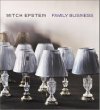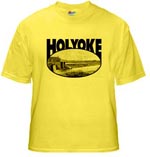by Laurel | June 9th, 2010
June 9, 1915
Benjamin Silverman’s Statement as to Use of Liquor by Jews in Certain Ceremonies.
The recent hearing before the licensing board on the granting of a saloon license in the Adelson block opposite the Park street synagog, which hearing developed statements by some of those appearing for the license which tended to place the Jewish religion in an unfavorable light has around the Jewish congregations of the city. Monday Rabbi Waxmann in a published statement denied that brandy was used in any of the services called for by the Jewish ritual and deplored that misstatements had been made, claiming that the Talmud contained no such law.
Benjamin Silverman of the Radphey Sholem congregation, whose synagog is the one in question, replied last evening to the statement of the rabbi and gives at the same time a clear account of the Jewish law relating to certain of the ceremonials included in its ritual. The statement given out last evening is as follows: —
Rabbi Waxmann, “an authority on Jewish religious law” (as he calls himself), took exception to the statement made by the writer at a hearing given by the license commissioners that wine and other stimulants are used in very small quantities at certain religious services. The writer, while appealing to the license commissioners not to grand a license near the synagog, refuted the infamous and malicious testimony given by some of the witnesses, who stated that liquor was sold in our synagog and drank on the premises, and explained that while there are stimulants used at some services, which occur very rarely, it is used so little and in such a pious style, that it is infamous and malicious to misinterpret it in order to give a wrong impression to the commissioners and to the public at large.
Our learned rabbi, while taking exceptions to these statements, called it audacity on my part to quote the Talmud inn support of my argument, saying the Talmud is only a dumb book and cannot reply, and there there is no such a law written in the Talmud or in any other book of the Jewish scripture. It therefore grieves me very much to be compelled to refute Rabbi Waxmann, and at the same time to express my doubt whether he can be recognized as an authority on Jewish rites in the face of his showing such an ignorance of Jewish scriptures, including the Talmud.
I will respectfully refer him to three volumes of the Talmud, namely, the book of Kethuboth, folio 8, page 2; the book of Passachim, folio 110, page 1, and the book of Semochoth, chapter 14, page 1, all of which books say in substance that in the house of a mourner after coming from the cemetery and after holding certain services, praying for the soul of the deceased, 10 goblets of wine shall be drank. The book Tamey Haminhagim on page 112 explains that this custom was adopted to cheer up the mourner so that he should not despair or question the justice of God for having taken away from him his beloved one.
This ceremony consists of filling a small glass, blessing the Lord and then after touching the glass to the lips say a few works of condolence to the mourner as prescribed by the ritual and conclude by saying “Broncho Achrono” (the final blessings). This ceremony used to be performed in the house of the mourner, providing a minion (“quorum”) could be gathered for that purpose and as according to Jewish law the house where a quorum gathers for the purpose of praying to God and blessing his holy name constitutes for the time being the house of the Lord. If a quorum cannot be obtained there, the mourner may to into the synagog, where the above services are held and the ceremony performed. As time passed on and men grew physically weaker it was found that this ceremony was sometimes abused and resulted in some instances in Intoxication, which is strictly forbidden by Jewish law, so that the amount of stimulant was steadily decreased until at the present time one of two ounces has to suffice for a whole quorum of 10 people.
Similar ceremonies performed at the time of Jahrzeit (annual anniversary of a death in one’s family). This custom dates back from the time of Rabbi Simeon Ben Rochoy, away back in the early centuries, and a certain legend is connected with it. The great Ranbam Rabbi Moses Ben Balmon, the great Talmudist and philosopher who lived in the years of 1135 and 1204, dwells largely in some of his writings on the custom of tasting some wine or other stimulant at the services of a mourner and at the Jahrzeit (annual anniversary).
In conclusion, permit me to say that if Rabbi Waxmann had been at the hearing, which as the spiritual leader of the congregation, should have been the case, and heard my exact statements of these facts, and had not depended upon garbled newspaper reports or exaggerated misrepresentation, I am sure he would have hesitated about rushing into print and taking me to task for my statement. The Talmud is not a dumb book, as was stated, but on the contrary is wholly enlightening to those who understands its language.
From The Springfield Republican.








